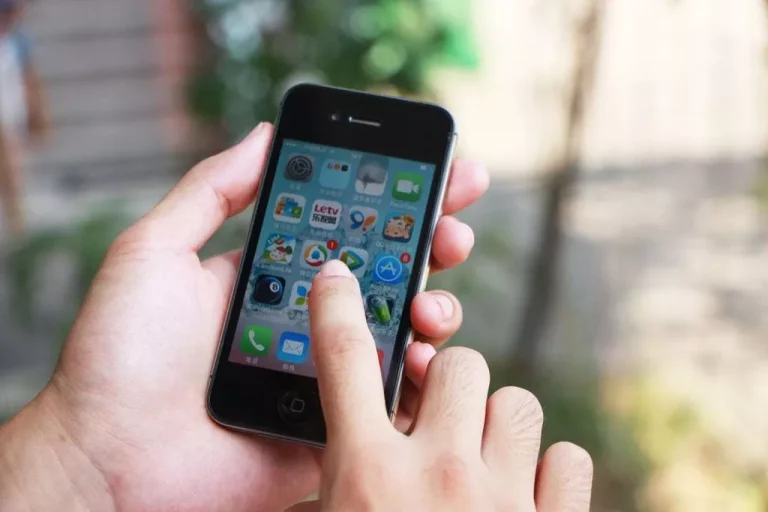From that time, you’ll be able to convert the wrapped BTC, and an equal variety of BTC will be transferred to my wallet on the new network. Blockchain bridges provide a promising approach to transfer beyond the Balkanization of blockchain networks in an effort to advertise greater innovation, person adoption and technological relevance. Instead, blockchain bridges work via smart contracts, that are basically a compliation of laptop code. When you want to move property from one chain to a different, the blockchain bridge locks up your funds within its sensible contract. In return, you receive the identical amount in wrapped crypto on your target chain.

The fundamentals of a blockchain bridge clarify the potential in addition to downsides of the new resolution. You can find a couple of blockchain bridge initiatives making their way towards reputation. The bridges present seamless transactions between in style blockchain networks. In addition, each bridge has a special method to operations based on its time.
Popular Blockchain Bridge Examples
Blockchain bridges work by making a connection between completely different blockchain networks. This connection could be achieved via numerous strategies, similar to good contracts, cryptographic algorithms, or specialized protocols. Once the bridge is established, customers can switch assets between blockchains. The two primary kinds of blockchain bridges are custodial and trustless. Custodial bridges have a central authority safeguarding funds, whereas trustless bridges operate by way of a collection of good contracts.
Blockchains have unique strengths, weaknesses, and approaches to building functions (such as pace, throughput, costliness, and so forth.). Bridges assist the event of the overall crypto ecosystem by enabling blockchains to leverage the improvements of each other. There are one-way (unidirectional) bridges and two-way (bidirectional) bridges.
- But whereas this obstacle may seem insurmountable, it can be circumvented.
- A blockchain bridge will wrap that Bitcoin and lock it in a sensible contract.
- A blockchain bridge is a connection that allows the switch of tokens and/or arbitrary data from one chain to a different.
- XDai is secured by a set of validators different from those who keep the Ethereum community.
- The second variant amongst bridges for blockchain networks would refer to a trustless blockchain bridge.
- Porting tokens cross-chain might help clear up scalability points associated to high demand.
The first way may be very centralized, and it’s essentially an extension of any other change. In a way, there’s a giant pool of Ethereum Tether, and a big pool of Polygon Tether. In the present what is a blockchain bridge state, the duty is on each of the totally different blockchains to innovate, clear up security issues, and be ready to scale.
To consider trustless bridges based mostly on other factors, we should break them down into generalized message passing bridges and liquidity networks. Blockchain expertise has come a long way since 2008 when the Bitcoin white paper was printed. Since then, an explosion of blockchain networks have been created, with an enormous variety of designs and intended performance. Bridges are crucial to onboarding customers onto Ethereum L2s, and even for customers who want to discover different ecosystems.
Once within the ecosystem, you can also swap or sell these tokens like some other asset on the Ethereum community. Custodial bridges require users to put their belief in a central entity to properly and safely function the system. Users ought to do in depth analysis to ensure that this entity is reliable. During the event and growth of the blockchain house, one of many greatest limitations has been the inability of different blockchains to work together. It can be obscure blockchain know-how and DeFi’s monetary and technical jargon.
Use Ethereum
To monitor contract activity throughout chains, builders can use subgraphs and developer platforms like Tenderly to watch sensible contracts in real-time. Such platforms also have instruments that supply higher data monitoring performance for cross-chain activities, similar to checking for events emitted by contracts(opens in a new tab), and so forth. Put merely, bridges unlock numerous use instances by permitting blockchain networks to change information and transfer property between them. Bridges supply a way for isolated blockchain environments to connect with each other. They set up a transportation route between blockchains where tokens, messages, arbitrary data, and even sensible contract calls can be transferred from one chain to another. For example, a sequence anchoring verifiable credentials on Polkadot might be used for KYC (Know Your Customer) requirements by a gaming firm built on Ethereum.
Porting a token by way of a cross-chain allows greater exposure for a DApp or DeFi protocol. Manual checkpoints are much like a trusted model as it relies upon upon a 3rd party, i.e., the officers, for its operations. As a user, you belief the officials to make the best decisions and use your private info appropriately. If you want to get your BTC again, you send your WBTC again to the bridge (where it is burned to guard the provision and value). As a end result, the BTC you locked in at the bridge is unlocked and comes again to you for use. Get conversant in the phrases related to blockchain with Blockchain Basics Flashcards.
There is no utopian solution to the problem of blockchain interoperability. Without bridges every blockchain has a monopoly on what users of their supported belongings can do. As more bridges connect to every of the layer 1 blockchains and their layer 2 purposes, that monopoly is damaged and users have more choice in how they transact.
This doesn’t simply result in the loss of assets held by the exposed finish of the bridge but has vital knock-on effects. In February the Wormhole Bridge hack noticed a hundred and twenty,000 Wrapped Ether (wETH) tokens, valued at $326million, stolen from the Solana facet of a bridge to Ethereum. Avalanche is considered one of the real challengers to Ethereum, as just like Solana, it presents improved throughput. You can bridge any ERC20 token to Avalanche and back utilizing the Avalanche Bridge. WBTC complies with the ERC-20 token normal used by Ethereum, so it may be used throughout its ecosystem.
The blockchain bridge by Binance serves as a bidirectional bridge between Ethereum and the principle Binance chain. It also utilizes particular options of the Ethereum-compatible BNB Smart Chain for wrapping token assets. The Binance Bridge helps customers utilize Ethereum-based belongings on the BNB Smart Chain by wrapping tokens in the BEP-20 token standard. The first entry among the kinds of a blockchain bridge would check with a trusted blockchain bridge. It is principally a protocol governed beneath a centralized approach, operator, or entity. Trusted blockchain bridge has earned the name as customers have to belief the status or identity of a centralized bridge and deposit their funds on the bridge.
Risk With Bridges
However, WBTC is an ERC-20 token native to the Ethereum network, which suggests it’s an Ethereum model of Bitcoin and not the unique asset on the Bitcoin blockchain. To personal native BTC, you would have to bridge your assets from Ethereum to Bitcoin utilizing a bridge. Alternatively, you would possibly personal BTC and want to use it in Ethereum DeFi protocols. This would require bridging the other means, from BTC to WBTC which might then be used as an asset on Ethereum.
A blockchain bridge is a connection that allows the transfer of tokens and/or arbitrary information from one chain to a different. Both chains can have completely different protocols, guidelines and governance models, however the bridge provides a compatible approach to interoperate securely on either side. In the case of trusted bridges, control is in the arms of a single entity or a small group of users.

However, trustless bridges can decrease the risk of exploits and hacks by frequently conducting thorough internal and exterior audits of their codes and good contracts. Below we observe a few well-known, regularly used blockchain bridges. For example, if the bridge isn’t adequately secured or audited, it could be vulnerable to hacks or exploits. Some blockchain bridges may require customers to belief a centralized authority or middleman. However, with correct precautions and cautious vetting of the bridge know-how, many of those dangers can be mitigated. By contrast, trustless bridges are those by which users don’t have to position trust in a single entity or authority.
Is Polkadot A Blockchain Bridge?
Using proof-of-reserves ensures that funds are stored securely, and new tokens are minted at a 1-to-1 ratio. Web3 video games and other projects can now port their token throughout multiple chains and scale back network stress. If a dapp goes down the route of integrating a bridge or an aggregator, there are different options primarily based on how deep the combination is supposed to be.
Revolutionary blockchain launches world-first native interoperability, eliminates need for bridges – Tahawul Tech
Revolutionary blockchain launches world-first native interoperability, eliminates need for bridges.
Posted: Thu, 18 May 2023 07:00:00 GMT [source]
To do this, you’d need a blockchain bridge to turn BTC into WBTC, which may subsequently be utilized as an asset on Ethereum. The functions of bridges go well beyond sending tokens over networks. Let’s take a look at how this technology can be useful for crypto house owners. Blockchain bridges encourage users to enterprise outside the domain of the particular belongings they hold. So somebody holding solely ERC20 tokens can nonetheless experiment with dApps on Solana or Polkadot, utilizing a bridge, which creates a higher diversity of expertise. Native verification of cross-chain transactions requires each blockchain to create custom validators – known as relay clients – working within the different chain’s consensus mechanism.
Blockchain Bridges Defined: Crypto 101
One such example is Bitcoin; its performance is limited to its personal community and its protocol doesn’t permit customers to interact with other networks. The restriction on interactions between completely https://www.xcritical.in/ different blockchain networks creates limits for decentralization, the core precept of blockchain expertise. A blockchain bridge serves as the best resolution for interoperability among different sorts of blockchain networks.
MSc in Computer Science, BSc in Smart Engineering, and BSc in Economics and Statistics. He holds certifications from Duke University in decentralized finance (DeFi) and blockchain know-how. This poses an issue whenever customers need to transfer property from one community to a different. For example, users can’t simply transfer their Bitcoin to the Ethereum blockchain.
It acts as a single trusted Custodian bridging Bitcoin and Ethereum through a lock-mint/burn-release approach. Though sophisticated, the core feature of blockchains is verifying the data they hold with out belief. Lock and mint bridges lock the tokens on chain A after receiving them and mint new tokens at a 1-to-1 ratio on chain B. The person that bridged tokens can obtain his unique tokens on chain A at any time. When a user redeems their tokens back on chain A, the tokens on chain B are despatched to a burn address.
A blockchain bridge is a connection that permits the switch of tokens or other knowledge from one chain to a different. Blockchain bridges are designed as an answer to restricted interoperability, which is probably considered one of the major challenges that blockchain know-how faces today. For example, trusted blockchain bridge presents the considerations of censorship because of centralized control.